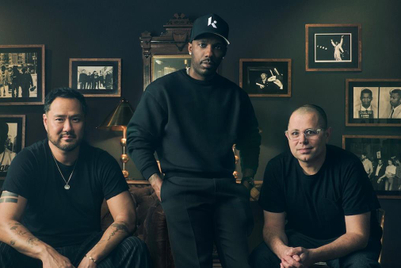
Success is the start of irrelevance
Umang Shah, a marketer who transitioned from the world of tech to Campbell’s Soup, drew on examples such as BlackBerry to suggest what it takes to avoid drifting into obscurity. BlackBerry lost the game because it became complacent, he said. Having had all the cards in its favour, with the first messaging app and nearly 50 percent of the US market, it threw them away by assuming its position was guaranteed and losing touch with its users, he said. Shah then pointed to the restaurant Noma as an example of how a brand should keep on its toes: After being named the best restaurant in the world, it shut its doors for a year to concentrate on how it was going to remain at the top. “That’s a hard decision,” Shah said. “Most people would just keep doing what they’re doing, and become complacent.”
A green scorecard means no progress
“One of the key things I focus on is forcing failure,” Shah said. “If five projects go through and are all successful, we haven’t tried that hard. Through our innovation lab, we say that a certain number of projects have to fail. You shouldn’t just focus on having green on your scorecard. Yellow and red show you’re trying to reach for big things.”
It’s also important to consider how you define failure, he said. Google Glass, no longer in production, might be seen as a failure. But the technology developed for and the lessons learned from Glass have made a lot of other projects possible, he noted. “In reality, it’s one of the most successful projects they’ve had.”
Omotenashi can power design thinking
Shunsuke Ishikawa, design director at Ideo in Tokyo, pointed out that design thinking is really not as complicated as people imagine. In the end, it’s just like being a good host, he said, quoting the designer Charles Eames. The principles of omotenashi (selfless hospitality) can be applied to brand experiences, he said—but to do so, Japanese people need to renew their awareness of this aspect of their culture. He gave the example of Mitsunari Ishida*, a temple worker, offering tea in three stages to the daimyo Toyotomi Hideyoshi after hunting, modifying the temperature and volume according to his guest’s condition; and of chopsticks being soaked in water prior to use for a soup dish, so as not to transfer the flavour of the wood to the soup. “We [tend to] start by thinking about business goals, then resources—but forget about people,” Ishikawa said. “Design thinking starts by thinking of the needs of people: the things that help people live better.”
Two beers can be enough to get the job done
In the same session, Joe Fry, a Tokyo-based member of Google’s global creative team, related how he had implemented a solution for football training for children in the space of little more than “a couple of beers” spent with the client at a pub. The solution involved embedding near-field communication (NFC) technology into the football, which he did directly after the session at the bar. If a big client had been involved, it could easily take a year, he said. “It’s problematic that processes are too long. If it can be done in two beers, it should be. To experiment doesn’t mean you have to invest lots of money or time.”
The sentiment was echoed by Yasuharu Sasaki, ECD of Dentsu, who gave the example of ‘Refunbilitation’—a project to make elderly people more active using basic technology to create games and other fun activities—to show that technology doesn’t have to be daunting. “These are not made by tech professionals,” he said. “We [at Dentsu] are not technology experts. But Japanese people often say ‘I’m not good at this’, so they never try.”
David Blecken is covering the conference all week and will be moderating a panel discussion on what Japanese brands must do to become global at 4:40 pm (3:40 pm HK/SG) tomorrow. The discussion includes executives from Rakuten, ADK Global, Ultra Super New and McCann Erickson Japan. We will be hosting a live stream of the session on campaignasia.com.
*This article has been updated to correct the name of the tea server. Ishikawa explains that Mitsunari Ishida was a regular employee who offered exceptional service and should thus serve as an inspiration to Japanese people.


.jpg&h=334&w=500&q=100&v=20250320&c=1)

.jpg&h=334&w=500&q=100&v=20250320&c=1)
.jpg&h=334&w=500&q=100&v=20250320&c=1)

.jpeg&h=334&w=500&q=100&v=20250320&c=1)


.jpg&h=334&w=500&q=100&v=20250320&c=1)





.jpg&h=268&w=401&q=100&v=20250320&c=1)
.jpg&h=268&w=401&q=100&v=20250320&c=1)

